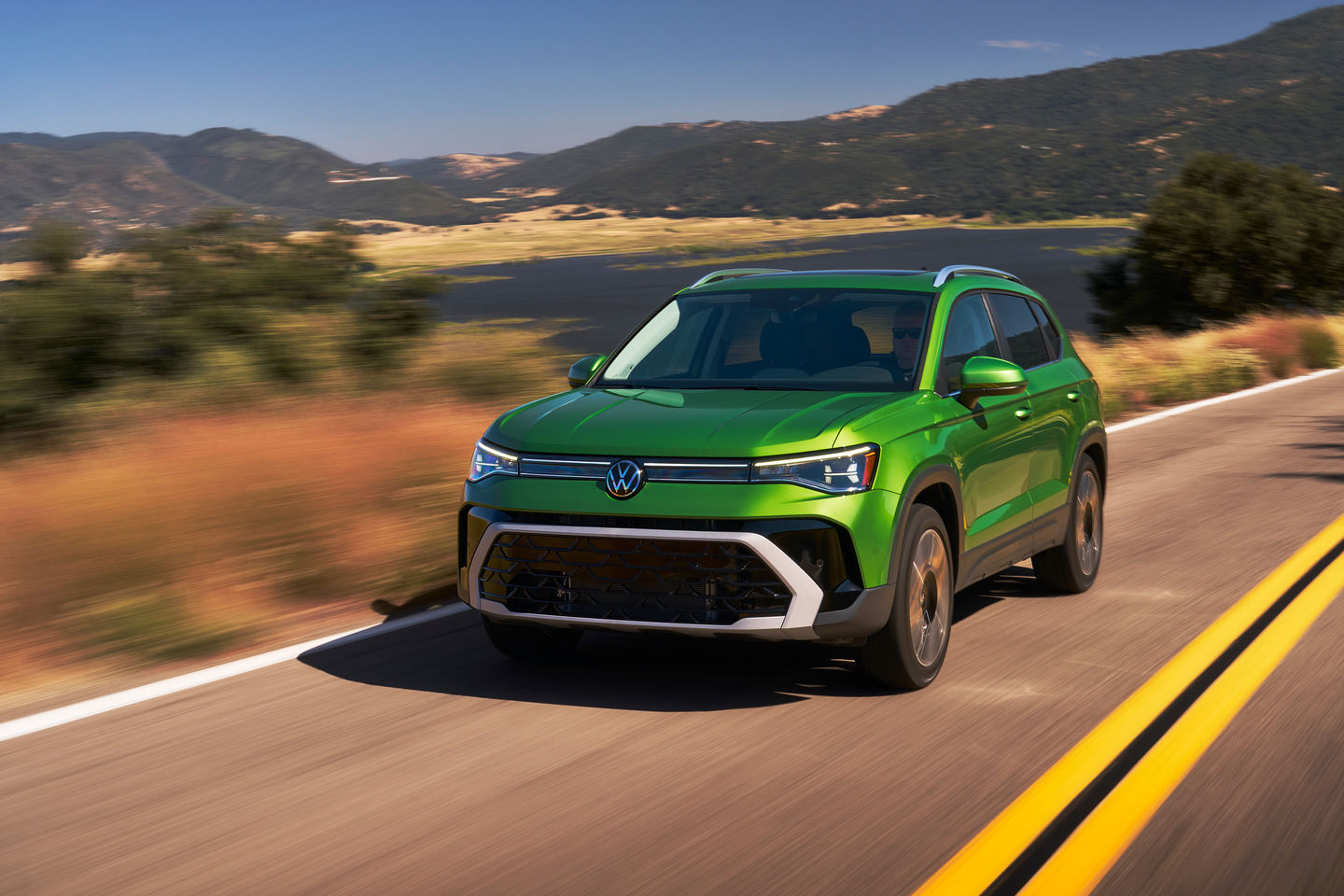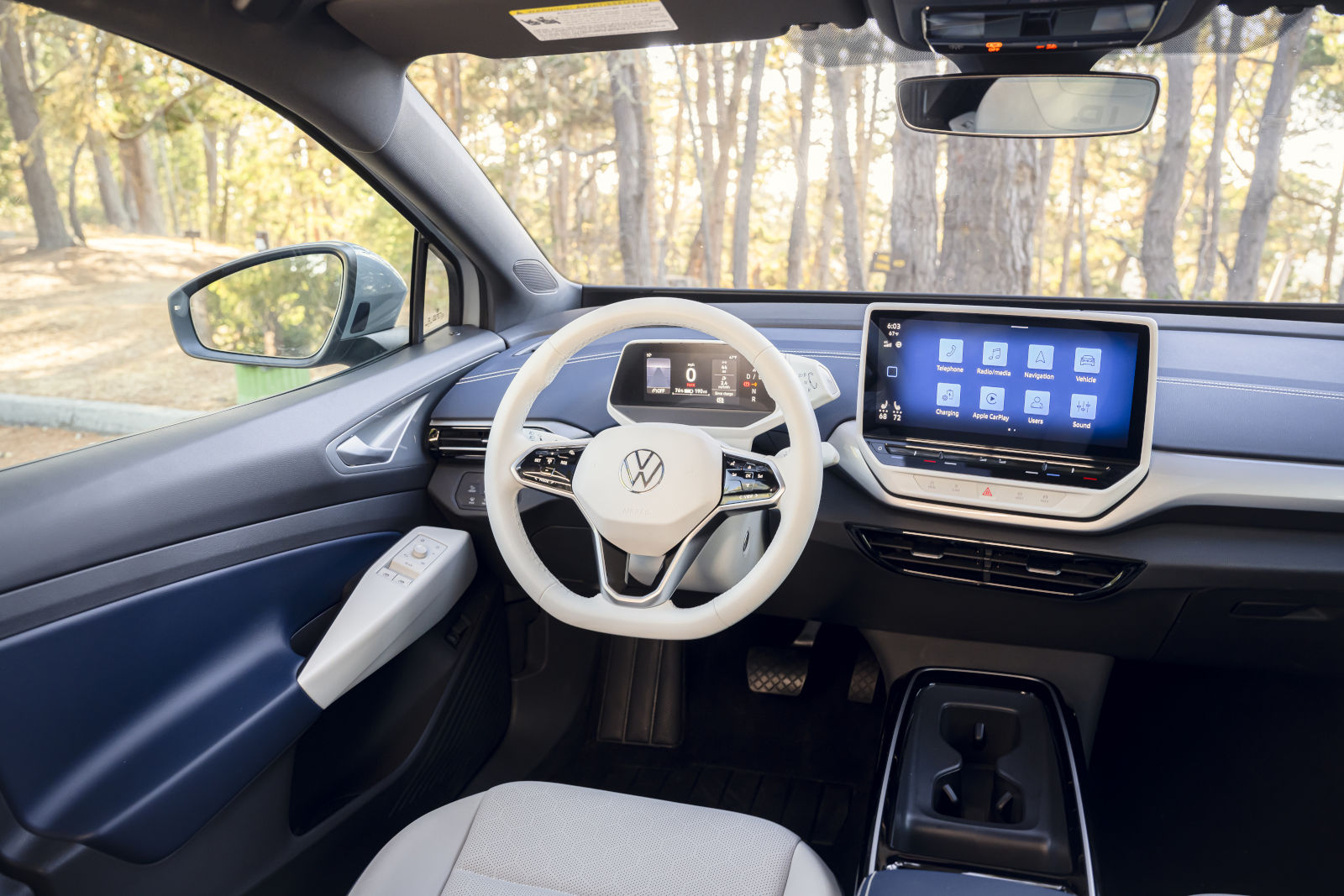Volkswagen's IQ.Drive is a comprehensive suite of driver assistance systems (ADAS) designed to make driving safer, more comfortable, and less stressful. Using a combination of cameras, radar, and ultrasonic sensors, IQ.Drive offers features that help the driver with everything from parking and changing lanes to monitoring traffic and even providing emergency braking in dangerous situations. The system is not fully autonomous, but it bridges the gap between manual driving and semi-automated functionality, designed to assist the driver in various real-world scenarios.
For drivers, especially those in urban and suburban areas like the Greater Toronto Area, IQ. Drive's tools provide an extra set of "eyes" on the road, improving awareness and helping manage everyday driving tasks. Let's explore each feature in detail, focusing on how it works during your daily drive.
How Volkswagen IQ.Drive Works

IQ.Drive utilizes a network of cameras, sensors, and radar systems around the vehicle to monitor the environment. These technologies work together to assess road conditions, track other vehicles, and provide feedback to the driver. Here's how the system functions in specific situations:
Adaptive Cruise Control (ACC) – Handling Highway Traffic
One of the more active features of the IQ.Drive suite, Adaptive Cruise Control (ACC) helps maintain a consistent speed on highways or long stretches of road while adjusting for the speed of vehicles ahead. ACC uses forward-facing radar sensors to "lock on" to the car in front of you when engaged. If that car slows down, the system reduces your speed by either easing off the accelerator or applying the brakes. When traffic speeds up again, ACC smoothly accelerates your vehicle to the preset speed.
For example, ACC manages these changes if you're driving on the 401 or the Gardiner Expressway and traffic fluctuates from 100 km/h down to 60 km/h. It helps avoid constant braking and accelerating, which can be exceptionally tiring in congested conditions. It's not just a convenience feature—it also contributes to safer driving by maintaining a safer following distance than many human drivers might, reducing the risk of rear-end collisions.
Lane Assist – Keeping You Centred
Lane Assist is a feature that helps the vehicle stay within its designated lane. A camera located near the rearview mirror tracks road markings. When the system detects that the vehicle is unintentionally drifting out of its lane—such as when the driver momentarily loses focus—it provides subtle corrective steering input to keep the car centred.
For example, imagine you're driving on the Don Valley Parkway, and you momentarily drift toward the edge of the lane because of a distraction. Lane Assist will sense the drift and gently nudge the steering wheel to guide you back, helping avoid unintentional lane changes. However, knowing you intend to switch lanes, the system will disengage if you actively signal a lane change.
Front Assist with Autonomous Emergency Braking – Preventing Collisions

Front Assist is one of the most crucial safety tools in IQ.Drive is designed to prevent or mitigate frontal collisions. This feature uses radar and cameras to scan the road ahead continuously. It first issues visual and audible warnings if it detects that you're approaching a vehicle or an obstacle too quickly. If you don't respond, the system can automatically apply the brakes to reduce speed or bring the car to a stop, depending on the severity of the situation.
Picture yourself driving down Bay Street in Toronto, and the car in front of you suddenly slams on its brakes. Front Assist will recognize the danger, alert you, and, if necessary, apply braking force automatically. In this scenario, the system could help avoid a collision or, at the very least, reduce the impact if the accident is unavoidable.
Blind Spot Monitoring and Rear Traffic Alert – Detecting the Unseen
Blind Spot Monitoring is another key safety feature in IQ.Drive, especially useful when changing lanes on highways or merging into traffic. Radar sensors mounted in the rear bumper monitor the areas to the side and behind your vehicle. If a vehicle enters your blind spot, a visual warning (usually a light in the side mirror) alerts you to its presence. If you attempt to change lanes despite the warning, the system can intervene by issuing a more forceful alert, often vibrating the steering wheel to grab your attention.
Similarly, Rear Traffic Alert uses the same radar sensors to help when you're reversing out of parking spots or driveways. If a car or pedestrian is approaching from either side, it will warn you audibly. If you fail to react, the system can automatically apply the brakes to prevent a collision.
For instance, when backing out of a parking space in a busy mall in Mississauga, the system scans for approaching vehicles or pedestrians you might not be able to see. If a car is moving into your path, the Rear Traffic Alert will give you an audible alert and can stop the vehicle if needed, preventing a possible accident.
Travel Assist – Semi-Autonomous Highway Driving

Travel Assist is one of the more advanced features in IQ.Drive combines the capabilities of Adaptive Cruise Control and Lane Assist to allow semi-autonomous driving, particularly useful for long highway journeys. When activated, Travel Assist can manage the vehicle's speed, maintain a safe distance from other cars, and even keep the car centred in its lane. However, it requires the driver to keep their hands on the wheel and remain alert.
If you're on a long drive along the QEW heading out of the city, Travel Assist can make the experience far less tiring. The system monitors traffic and road markings to keep you in your lane and adjust your speed according to traffic flow. This function can make extended driving periods more manageable, but it isn't a hands-off experience—you must be ready to take complete control at any moment.
Emergency Assist – Responding to Driver Inattention
Emergency Assist comes into play in rare instances when the driver becomes incapacitated or unresponsive (for example, due to a medical emergency). If no steering input is detected for a certain amount of time despite warnings, the system assumes something is wrong. It will then take control by engaging the hazard lights, gently decelerating, and bringing the vehicle to a controlled stop within its lane. This can be a crucial life-saving feature in emergencies, allowing the car to come to rest safely without swerving into other lanes or traffic.
Real-World Application: How IQ.Drive Benefits Drivers

The various features of IQ.Drive work together to address the most common driving challenges, especially in dense and unpredictable regions such as Toronto. While these systems are designed to reduce driver fatigue and prevent accidents, they also make everyday driving more seamless by automating many tasks drivers usually handle manually.
For example, in heavy rush-hour traffic on the 401, Adaptive Cruise Control maintains a safe following distance, while Lane Assist keeps you centred, even if the lanes are narrow. And if you're navigating city streets with frequent starts and stops, Front Assist and Autonomous Emergency Braking provide an extra layer of security by reacting to sudden changes faster than most drivers can.
Conclusion
Volkswagen's IQ.Drive system is more than just a collection of safety features—it's an integrated, intelligent platform designed to enhance your driving experience. From managing highway speeds with Adaptive Cruise Control to preventing collisions with Front Assist, the system works behind the scenes to make your drive safer and less stressful. While not a replacement for the driver, IQ.Drive is a valuable co-pilot that assists in maintaining control, responding to potential hazards, and reducing the mental load of daily driving.
Whether you're commuting in Toronto or taking a road trip across Ontario, IQ.Drive offers a suite of practical, real-world features that can significantly improve safety and comfort on the road.
You might also be interested in these blogs:
Volkswagen GTI vs. GLI vs. Golf R: 10 Key Differences for 2025
How Much Will the 2025 Volkswagen Taos Cost in Fuel Based on Your Driving Habits?
2025 Volkswagen Jetta GLI: 10 Things It Does Differently Compared to the Jetta










